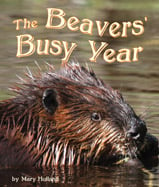Alignment to Standards for TN

| Grade | Number | Standard |
|---|---|---|
| 1 | SC-1.1.2. | Recognize that smaller parts of living things contribute to the operation and well being of entire organisms. |
| 1 | SC-1.2.2. | Realize that organisms use their senses to interact with their environment. |
| 1 | SC-1.2.3. | Examine interrelationships among plants, animals, and their environment. |
| 1 | SC-1.2.3.a | Collect information about organisms that occupy specific environments. |
| 1 | SC-1.3.1.a | Recognize the basic needs of living things (e.g., food, water, sunlight, air). |
| 1 | SC-1.5.2. | Recognize that living things have features that help them to survive in different environments. |
| 1 | SC-1.5.2.a | Recognize the environment in which an organism is typically found. |
| 2 | SC-2.2.2. | Realize that organisms use their senses to interact with their environment. |
| 2 | SC-2.2.2.a | Determine how animals interact with the living and non-living elements in their environment through the senses. |
| 2 | SC-2.2.3. | Examine interrelationships among plants, animals, and their environment. |
| 2 | SC-2.2.3.a | Determine how organisms interact with the non-living elements of their environment. |
| 2 | SC-2.3.1. | Recognize the basic requirements of all living things. |
| 2 | SC-2.3.1.a | Compare how plants and animals satisfy their basic requirements for life. |
| 2 | SC-2.5.2. | Recognize that living things have features that help them to survive in different environments. |
| 2 | SC-2.5.2.a | Classify an organism according to the environment in which it can best survive. |
| 3 | SC-3.1.2.b | Recognize that smaller parts of organisms are essential to their well being. |
| 3 | SC-3.2.3. | plants and animals depend upon each other and the non-living elements of an environment to meet basic needs. |
| 3 | SC-3.2.3. | Examine interrelationships among plants, animals, and their environment. |
| 3 | SC-3.3.1. | Recognize the basic requirements of all living things. |
| 3 | SC-3.5.2. | Recognize that living things have features that help them to survive in different environments. |
| 3 | SS-3.3.02.c | Understand the concept of an ecosystem. |
| 3 | SS-3.3.02.d | Describe how environments and regions differ around the world. |
| 4 | SC-4.2.1. | Investigate the relationships among organisms in a specific ecosystem. |
| 4 | SC-4.2.1.a | Examine and relate how plants and animals interact with each other and their environment. |
| 4 | SC-4.3.1. | Realize that plants and animals use food for energy. |
| 4 | SC-4.3.1.a | Explain that animals must obtain and use food for energy. |
| 4 | SC-4.3.2. | Recognize the function of specific structures in organisms that allow them to obtain and use energy. |
| 5 | SC-5.2.1. | Investigate the relationships among organisms in a specific ecosystem. |
| 5 | SC-5.3.1. | Realize that plants and animals use food for energy. |
| 5 | SC-5.3.2. | Recognize the function of specific structures in organisms that allow them to obtain and use energy. |
| 5 | SC-5.5.2. | Determine that adaptations help organisms to survive in their environments. |
| K | SC-K.2.2. | Realize that organisms use their senses to interact with their environment. |
| K | SC-K.5.2. | Recognize that living things have features that help them to survive in different environments. |
| K | SC-K.5.2.a | Know that different organisms tend to be found in different environments. |